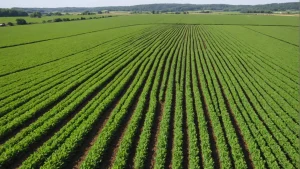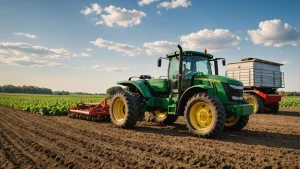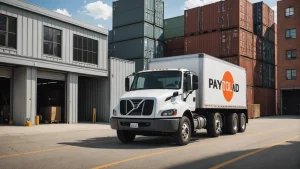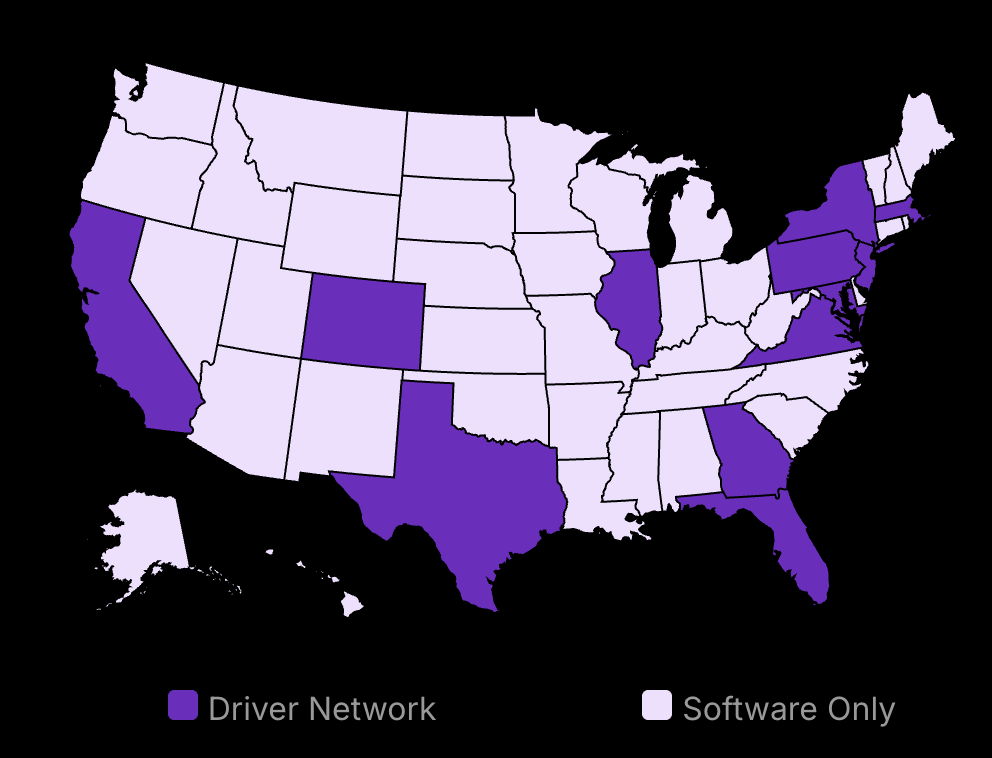Investing in farmland is not a decision to be taken lightly, especially for business owners looking to diversify their portfolios and grow crops.
With countless factors to consider, from soil quality and water rights to zoning laws and market trends, the process can quickly become overwhelming.
But fear not, intrepid investor: we’re here to guide you through the 6 most crucial considerations before taking the plunge into agricultural real estate.
From assessing the land’s potential to navigating the legal landscape, we’ll arm you with the knowledge you need to make an informed decision and avoid costly pitfalls.
So grab your boots and let’s dig into the nitty-gritty of choosing farmland for investment – your future portfolio (and taste buds) will thank you.

Boost customer satisfaction with just a few clicks
Most-Loved Features:
- On-demand drivers
- Real-time GPS tracking
- Delivery confirmation photos
- Over 50% of customers report a smoother delivery experience
Choosing a Farmland: 6 Key Farmland Investment Considerations
Location and Climate
When considering a farmland investment, one of the most critical factors to assess is the location, topography, and climate of the property. The soil quality, water availability, and climate suitability for your intended crops or livestock can significantly impact the success of your farming operation.
It’s essential to research the historical weather patterns, average temperatures, and precipitation levels in the area to ensure they align with the needs of your planned agricultural activities. Additionally, evaluate the potential for natural disasters or extreme weather events, such as floods, droughts, or hurricanes, which could pose risks to your investment.
The proximity of the farmland to markets, processing facilities, and transportation networks is another crucial consideration. Easy access to these resources can help streamline your operations, reduce transportation costs, and increase the efficiency of your supply chain.
Zoning and Land Use Regulations
Before investing in farmland, it’s crucial to thoroughly research local zoning laws and land use regulations to ensure the property can be used for agricultural purposes. Zoning ordinances vary by location and can dictate the types of activities allowed on the land, such as crop cultivation, livestock housing, or the construction of farm-related structures.
Investigate any restrictions on building structures, housing livestock, or using certain farming practices. Some areas may have specific requirements for setbacks, building heights, or the number of animals allowed per acre. Failing to comply with these regulations could result in fines, legal issues, or the inability to carry out your intended farming activities.
Understanding any environmental regulations or conservation easements that may apply to the property is also important. These could include restrictions on land use to protect natural resources, such as wetlands or wildlife habitats. Familiarize yourself with any required permits or licenses needed to operate your farm business in compliance with local, state, and federal laws.
Infrastructure and Utilities
Assessing the condition and capacity of existing infrastructure on the farmland is another key consideration. Evaluate the state of irrigation systems, barns, storage facilities, and other structures critical to your farming operations. Determine whether these assets are in good working order or if they require significant repairs or upgrades.
The availability and cost of essential utilities, such as electricity, water, and internet connectivity, should also be investigated. Reliable access to these resources is crucial for running a modern farming operation, from powering equipment to monitoring crop and livestock data. Consider the proximity of the property to utility connections and the associated costs of bringing these services to the farm if they are not already in place.
In some cases, additional investments in infrastructure may be necessary to support your farming plans. This could include installing new irrigation systems, constructing storage facilities, or building housing for farm workers. Factor these potential costs into your overall investment strategy and budget to ensure the long-term viability of your farmland purchase.
Soil Quality and Water Resources
The quality of the soil and the availability of water resources are critical factors in determining the productivity and value of farmland. Before investing, conduct thorough soil tests to assess the nutrient content, pH levels, and overall health of the soil. This information will help you determine the suitability of the land for your intended crops and identify any potential issues that may need to be addressed, such as nutrient deficiencies or soil compaction.
Water is another essential resource for any successful farming operation. Evaluate the availability and reliability of water sources on the property, including wells, streams, or irrigation districts. Consider the water rights associated with the land and any restrictions or regulations on water use in the area. In regions prone to drought or with limited water resources, investing in efficient irrigation systems or exploring alternative water management strategies may be necessary.
Local Agricultural Community and Support
Investing in farmland isn’t just about the land itself; it’s also about becoming part of the local agricultural community. Building relationships with neighboring farmers, agricultural organizations, and regional extension services can provide valuable support, knowledge, and resources to help you navigate the challenges of running a farm business.
Attend local agricultural events, join farming associations, and participate in community initiatives to establish yourself within the farming network. These connections can offer insights into local farming practices, share experiences with different crops or livestock, and guide navigating local regulations and markets.
Additionally, research the availability of local agricultural support services, such as veterinarians, equipment dealers, and crop advisors. Having access to these professionals can be invaluable in maintaining the health and productivity of your farm.
Long-Term Investment Strategy For Beginning Farmers
Investing in farmland is a long-term commitment that requires careful planning and a clear investment strategy. Consider your financial goals, risk tolerance, and timeline for returns when evaluating potential farmland investments.
Develop a comprehensive business plan that outlines your intended farming activities, projected revenues and expenses, and marketing strategies. This plan should also include provisions for managing risks, such as crop failures, market fluctuations, or unexpected weather events.
It’s also important to consider the potential for alternative revenue streams from your farmland investment. In addition to traditional crop or livestock production, explore opportunities to acquire land for agritourism, value-added product processing, or leasing portions of the land for renewable energy production, such as wind or solar farms.

Metrobi is transforming farm deliveries
Specialized solutions for farm businesses:
- Farm-trained drivers
- Proper handling equipment
- Peak day delivery support
- 23% average cost reduction
Conducting Due Diligence for Farm Purchase Land
Investing in farmland can be a lucrative venture for business owners, but it’s essential to conduct thorough due diligence before committing to a purchase. This process involves investigating the property’s legal, environmental, and agricultural aspects to ensure that it aligns with your investment goals and minimizes potential risks.
Property Title and Ownership History
Before investing in farmland, it’s crucial to verify that buying land that the property has a clear title and ownership history. This step helps avoid any legal disputes or encumbrances that could hinder your use of the land or compromise your investment. Learn the foundational aspects of beginning a farming venture, including acquiring land with a clear title, through our comprehensive guide on initiating a farm.
Start by reviewing the property’s title records, which can typically be accessed through the local county recorder’s office or online databases. Look through property listings for any liens, easements, or other encumbrances that may affect your ownership rights or use of the land. If you discover any issues, work with a real estate attorney to resolve them before proceeding with the purchase.
In addition to reviewing the property’s title, investigate any existing leases, easements, or agreements to purchase land, that may impact your use of the land. For example, if there are current tenants or farming contracts in place, ensure that they align with your intended use of the property and that you can assume or terminate these agreements as needed.
To navigate the complexities of property ownership and ensure a smooth transaction, engage an experienced real estate attorney who specializes in agricultural properties. They can assist with the due diligence process, review contracts, and negotiate terms on your behalf, protecting your interests throughout the purchase process.
Environmental Assessments and Soil Health Tests
Conducting environmental assessments and soil tests is essential to determine the land’s suitability for your intended agricultural use and identify any potential issues that could impact your investment.
Hire an environmental consultant to assess the property for any potential contamination or hazardous materials, such as pesticide residue, underground storage tanks, or industrial waste. These issues can lead to costly remediation efforts and legal liabilities, so it’s crucial to identify them before purchasing the land.
Quality of the soil amendments is a critical factor in determining a farmland’s productivity and value. Conduct comprehensive soil tests to assess nutrient content, pH levels, and overall soil health. These tests can help you determine the land’s suitability for specific crops, identify any deficiencies that need to be addressed, and estimate the costs associated with improving soil quality.
Water is a vital resource for any agricultural operation, so it’s essential to thoroughly evaluate the property’s water rights and availability. Research local water laws and regulations to ensure that the land has sufficient access to water sources, such as wells, irrigation systems, or surface water. Additionally, investigate any restrictions on water usage that may impact your ability to cultivate crops or raise livestock.
Assessing Farmland Profitability Potential
Market Demand and Pricing Trends
Before investing in farmland, it’s essential to research the demand for your intended crops or livestock products in the local and regional markets. This step helps you understand the potential customer base and market size for your agricultural products.
Start by analyzing historical pricing trends for your chosen commodities. Look at data from the past 5-10 years to identify patterns and fluctuations in prices. This information can help you make informed decisions about what to grow or raise on your farmland.
Next, research projected market conditions for your selected products. Consider factors such as population growth, consumer preferences, and economic trends that may impact demand in the future. This analysis will help you anticipate potential changes in the market and adjust your plans accordingly.
Once you have a clear understanding of market demand and pricing trends, identify potential marketing channels for your agricultural products. Consider options such as:
Direct sales to consumers through farmers’ markets or community-supported agriculture (CSA) programs
Wholesale distribution to grocery stores, restaurants, or food processors
Online sales through e-commerce platforms or your website
Assess the competition in your target markets to determine how your products will stand out. Research other farms or agricultural businesses in the area to understand their offerings, pricing, and marketing strategies. This information can help you differentiate your products and develop a competitive advantage.
Yield Potential and Production Costs of Choosing A Farmland
To accurately assess the profitability potential of farmland, you must estimate the potential crop yields or livestock production capacity based on the land’s characteristics and historical data. This process involves analyzing factors such as soil quality, water availability, local climate conditions, and past production records.
Next, calculate the expected production costs associated with your farming operation. This includes expenses such as:
Input costs (seeds, fertilizers, feed, etc.)
Labor costs (wages, benefits, etc.)
Equipment costs (purchase, maintenance, fuel, etc.)
Transportation costs (shipping, delivery, etc.)
Create a detailed budget that accounts for all anticipated expenses to ensure you have a realistic understanding of the costs involved in running your agricultural business.
Finally, develop a comprehensive financial projection that incorporates your estimated yields, production costs, and expected market prices. This projection should include:
Revenue projections based on estimated yields and market prices
Expense projections based on production costs and other operating expenses
Cash flow projections that show the timing of income and expenses
Profitability projections that demonstrate the potential return on investment
Navigating the Risks and Challenges of Farmland Ownership
Financial Risks and Financing Options
Investing in farmland requires significant capital, not only for the initial land acquisition but also for equipment, infrastructure, and working capital. According to the USDA, the average cost of farm real estate in the United States was $3,380 per acre in 2021, with prices varying widely depending on location, soil quality, and other factors.
To finance your farmland purchase and operations, you may need to explore various agricultural loans, SMSF loans and grants. The USDA Farm Service Agency offers several loan programs, including direct farm ownership loans, operating loans, and microloans. These loans can help cover the costs of purchasing land, equipment, livestock, and other farm-related expenses. For example, the FSA’s direct farm ownership loan program provides up to $600,000 in financing for eligible borrowers.
Additionally, the USDA Natural Resources Conservation Service (NRCS) provides grants and cost-share programs to help farmers implement conservation practices and improve the sustainability of their operations. The NRCS’s Environmental Quality Incentives Program (EQIP) offers financial assistance for projects that enhance environmental quality and promote sustainable agriculture.
Another option to consider is partnering with investors who are interested in buying farmland as an asset class. Farmland has historically provided stable returns and can serve as a hedge against inflation. By partnering with investors, you can share the financial risks and rewards of farmland ownership while leveraging their capital and expertise. For instance, companies like FarmFundr and FarmTogether offer investment opportunities in farmland, providing a way for individuals to invest in agricultural assets.
Operational and Management Challenges
Owning and operating a farm requires a diverse set of skills and a significant time commitment. As a business owner, you’ll need to assess your own experience and capabilities in areas such as crop production, livestock management, machinery operation, and financial management. Understanding the range of risks involved in farming emphasizes the importance of insurance for farmers in safeguarding their operations and investments.
Farming is a full-time job that often requires long hours and physical labor. Depending on the size and type of your operation, you may need to hire additional staff or work with contractors to handle various tasks, such as planting, harvesting, and equipment maintenance. According to the Bureau of Labor Statistics, the median annual salary for farm managers was $71,160 in May 2020.
It’s essential to have a realistic understanding of the time and labor requirements for running a successful farm and to plan accordingly. This may involve developing a detailed business plan, creating a budget for labor costs, and establishing systems for managing employees and contractors.
To navigate the challenges of farmland ownership, it’s valuable to identify potential partners, advisors, or mentors who can provide guidance and support. This may include:
Experienced farmers or ranchers who can share their knowledge and insights
Agricultural extension agents or consultants who can provide technical assistance and advice
Industry associations or networks that offer educational resources and networking opportunities, such as the National Association of State Departments of Agriculture (NASDA) or the American Farm Bureau Federation (AFBF)
Building a strong support network can help you make informed decisions, avoid common pitfalls, and adapt to the ever-changing landscape of agriculture.
Developing a Risk Management Plan
Investing in farmland comes with inherent risks, such as weather volatility, market fluctuations, and disease outbreaks. To mitigate these risks, it’s crucial to develop a comprehensive risk management plan that addresses potential threats to your operation’s profitability and sustainability.
One key component of a risk management plan is crop insurance, which can provide financial protection against yield losses due to adverse weather events, pests, or other factors. The USDA Risk Management Agency (RMA) offers several crop insurance programs, including yield protection, revenue protection, and crop revenue coverage. For example, the RMA’s Crop Insurance Program provides coverage for over 100 crops, including corn, soybeans, and wheat.
In addition, gain access to insurance, diversifying your crop mix, or incorporating livestock into your operation can help spread risk and provide multiple revenue streams. By growing a variety of crops or raising different types of animals, you can reduce your vulnerability to price fluctuations or production issues affecting a single commodity.
Another critical aspect of risk management is contingency planning for unexpected events, such as equipment breakdowns, supply chain disruptions, or market downturns. Developing a contingency fund or financial reserves can help you weather these challenges and maintain the long-term viability of your farm.
Consider setting aside a portion of your profits each year to build an emergency fund or investing in liquid assets that can be easily converted to cash if needed. Additionally, regularly reviewing and updating your business plan can help you adapt to changing market conditions and identify new opportunities for growth and resilience.
Selecting the Best Business Structure for Your Farm
Sole Proprietorship
The simplest and most common structure for small farms is the sole proprietorship. In this arrangement, the farmer assumes all liability and risk associated with the farm’s operations. While this structure offers complete control and minimal paperwork, it may limit access to certain financing options and government programs.
According to agricultural law expert Rachel Armstrong, “Sole proprietorships are often the default choice for beginning farmers due to their simplicity. However, it’s essential to understand the personal financial risks involved and consider upgrading to a more protective structure as the farm grows.”
Partnership
For farmers who want to share ownership, management, and financial responsibility, a partnership can be an attractive option. This structure allows for the pooling of resources and expertise among partners. However, it’s crucial to have a clear partnership agreement that outlines roles, responsibilities, and profit-sharing arrangements.
As noted by the National Agricultural Law Center, “Partnerships can be an effective way for farmers to combine their strengths and share the workload. But without a well-drafted partnership agreement, disputes can arise that threaten the stability of the farm.”
Limited Liability Company (LLC)
An increasingly popular choice for farm businesses is the limited liability company (LLC). This structure offers personal liability protection for farm owners, shielding their assets from the farm’s debts and legal obligations. LLCs also provide flexibility in management structure and tax treatment.
Farm business consultant Poppy Davis advises, “LLCs have become the go-to choice for many farm businesses due to their combination of liability protection and operational flexibility. However, they do require more formal record-keeping and reporting than sole proprietorships or partnerships.”
Corporation
For the highest level of personal liability protection and the ability to raise capital through the issuance of stock, a corporation may be the best choice. This structure can attract investors and facilitate business continuity across generations. However, corporations involve more complex tax and regulatory requirements compared to other structures.
According to agricultural CPA Paul Neiffer, “Corporations can be an excellent fit for larger, more established farm businesses that need to raise significant capital or plan for succession. But the added complexity and costs may not be justified for smaller operations.”
When selecting the best business structure for your farm, carefully consider factors such as personal liability exposure, tax implications, management flexibility, and access to financing and government programs. Consult with legal and financial professionals who specialize in agricultural businesses to determine the optimal structure for your unique circumstances and goals.
Understanding the Basics of Farmland Ownership
Types of Farmland
Cropland
Cropland is land used for growing annual or perennial crops. Annual crops, such as corn, soybeans, and wheat, are planted and harvested within a single growing season. Perennial crops, like fruit trees and alfalfa, continue to grow and produce for multiple years without replanting.
The value of cropland depends on factors such as soil quality, climate, and access to water. Highly productive cropland with fertile soil and adequate water supply is generally more valuable than marginal cropland with poor soil fertility or limited water resources.
Pastureland
Pastureland is land used for grazing livestock or producing hay. It can be either native grassland or improved pasture that has been seeded with specific forage species. The carrying capacity of pastureland, or the number of animals it can support, varies based on factors such as forage quality, rainfall, and management practices.
Pastureland value is influenced by its productivity, as well as its proximity to water sources and other infrastructure needed for livestock production. Well-managed pastureland can provide a sustainable source of forage for livestock while also offering environmental benefits, such as carbon sequestration and wildlife habitat.
Timberland
Timberland is land used for growing and harvesting timber or other forest products. It can range from natural forests to managed plantations of species like pine, oak, or maple. The value of timberland depends on factors such as the age and species composition of the timber stand, as well as access to markets and transportation infrastructure.
Timberland can provide a long-term investment opportunity, as trees take many years to reach maturity. However, it also carries risks such as fire, disease, and fluctuations in timber prices. Sustainable forest management practices can help ensure the long-term productivity and health of timberland while also providing environmental benefits.
Farmland Valuation Factors
Soil quality is a critical factor in determining the value and productivity of farmland. Key indicators of soil quality include:
Soil texture (the relative proportions of sand, silt, and clay)
Soil organic matter content
Nutrient availability
Soil pH
Drainage and water-holding capacity
Highly productive soils, such as those found in the U.S. Corn Belt, can command premium prices due to their ability to consistently produce high crop yields. On the other hand, soils with limitations such as high salinity, poor drainage, or shallow depth to bedrock may have lower value and productivity.
Access to reliable water sources is essential for many types of agriculture, particularly in arid or semi-arid regions. Farmland with secure water rights or access to irrigation infrastructure can be significantly more valuable than dryland farms that rely solely on rainfall.
Water rights can take various forms, such as riparian rights (based on land ownership along a water source) or appropriative rights (based on the historical use of water). In some regions, water rights can be bought, sold, or leased separately from the land itself.
It’s important to thoroughly investigate the water rights associated with the property lines of any farmland investment, as well as the long-term sustainability of the water source. Overexploited aquifers, changing precipitation patterns, and competing demands for water can all affect the value and viability of farmland.
The location of farmland can have a significant impact on its value and profitability. Factors to consider include:
Proximity to processing facilities, distribution centers, and end markets
Access to transportation infrastructure, such as highways, rail lines, and ports
Local zoning regulations and land use policies
Nearby urban development and competing land uses
Farmland located close to major population centers or transportation hubs may have higher value due to lower transportation costs and greater market access. However, it may also face development pressure or conflicts with non-agricultural land uses.
Remote farmland, while potentially less expensive, may face challenges in accessing markets and services. It’s important to carefully evaluate the trade-offs between location, price, and market access when considering a farmland investment.
The value of farmland can be enhanced by the presence of improvements to irrigation system and infrastructure, such as:
Irrigation systems, wells, and water storage
Drainage tiles and leveling
Buildings, such as barns, storage facilities, and housing
Fencing and livestock handling facilities
Conservation structures, such as terraces, grassed waterways, and buffer strips
These improvements can increase the productivity and efficiency of farming operations, but they also represent additional capital investment. It’s important to assess the condition and value of any improvements when evaluating a farmland purchase, as well as the ongoing maintenance and replacement costs.
In some cases, the absence of certain improvements may present an opportunity to add value to the property through strategic investments. However, it’s important to carefully consider the costs and benefits of any proposed improvements, as well as their compatibility with the overall farm business plan.
Farmland Leasing Options
Cash Rent
Cash rent is a leasing arrangement renting land in which the tenant pays a fixed cash amount for the right to use the land for a specified period, typically one year. The landowner does not share in the costs or risks of production but also does not benefit from any profits beyond the agreed-upon rent.
Cash rent can provide a stable and predictable income stream for landowners while giving tenants greater autonomy in making management decisions. However, it may not allow for flexibility in the face of changing market conditions or production risks.
When negotiating a cash rent agreement, it’s important to consider factors such as the productivity of the land, local market conditions, and the tenant’s track record and financial stability. Setting a fair and competitive rental rate can help attract and retain quality tenants.
Crop Share
Under a crop share lease, the landowner and tenant agree to split the costs and revenues of the crop production according to a predetermined formula. For example, a common split is 50/50, where the landowner and tenant each receive half of the crop and pay half of the input costs.
Crop share leases allow for a more equitable sharing of risks and rewards between the landowner and tenant. If crop prices or yields are high, both parties benefit; if they are low, both share in the loss. This arrangement can also incentivize the landowner to take a more active role in management decisions and investments in the property.
However, crop share leases also require greater communication and cooperation between the landowner and tenant, as well as a clear understanding of how costs and revenues will be allocated. It’s important to have a written lease agreement that specifies the terms of the crop share arrangement, including the division of costs and revenues, the duration of the lease, and the responsibilities of each party.
Flexible Cash Rent
Flexible cash rent is a hybrid approach that combines elements of both cash rent and crop share leases. Under this arrangement, the tenant pays a base cash rent, which is then adjusted up or down based on factors such as crop yields, prices, or input costs.
For example, the lease agreement might specify a base rent of $200 per acre, with an additional $0.50 per bushel paid for every bushel of corn yield above 150 bushels per acre. Conversely, the rent might be reduced by $0.50 per bushel for every bushel below 150 bushels per acre.
Flexible cash rent can provide a way to share risks and rewards between the landowner and tenant, while still providing a degree of stability and predictability in the rental payment. It can be especially useful in regions with variable weather patterns or fluctuating commodity prices.
However, flexible cash rent agreements can be more complex to negotiate and administer than traditional cash rent or crop share leases. It’s important to have a clear and detailed lease agreement that specifies the formula for calculating rent adjustments, as well as any caps or floors on the total rental payment.
Making the Right Call on Farmland Investment
Investing in farmland is a significant decision that requires careful consideration of multiple factors. From location, vegetation present, and climate to zoning regulations and infrastructure, each element plays a crucial role in determining the success of your agricultural venture. Conducting thorough due diligence, assessing profitability potential, and understanding the risks and challenges are essential steps in the process. Learn how to initiate a farming venture with our comprehensive guide, detailing the crucial measures to setting up a thriving agricultural business.
As you navigate this complex landscape, remember that selecting the appropriate business structure is equally important. Whether you opt for a sole proprietorship, partnership, LLC, or corporation, your choice will have lasting implications for your farm’s operations, liability, and financial future.




























